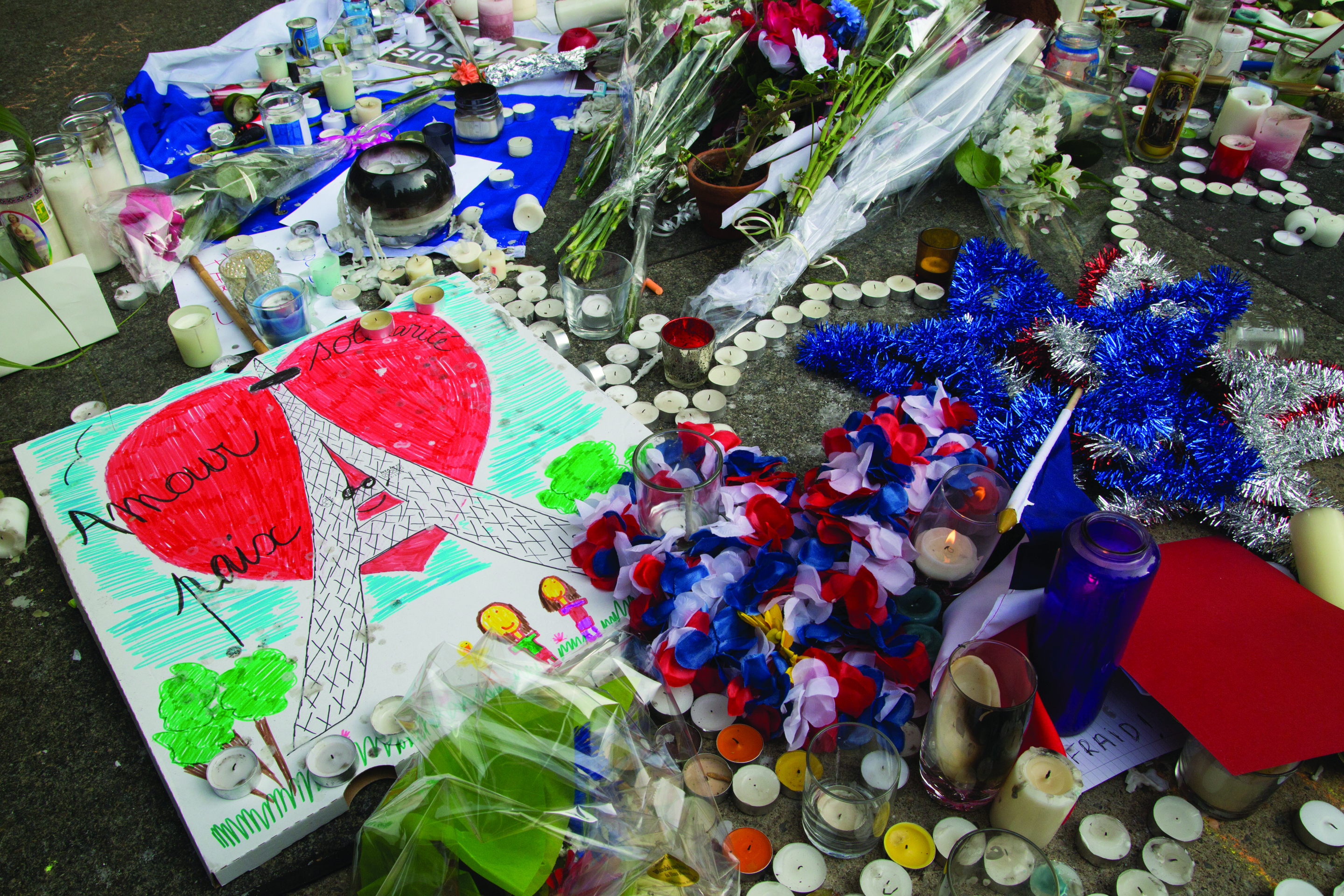Marking the one-year anniversary of the horrific terror attacks in the French capital
On a dark and blustery November evening, I remember being on the train, making my way home to the sleepy suburbs from our bustling metropolis. The train had just left Lucien L’Allier when my phone illuminated with multiple notifications from the BBC, saying a bomb had gone off outside Stade de France in Paris.
Then my phone flashed again with another update, saying multiple gunmen had open fired at citizens in a bar in the 10th arrondissement of the French capital. Minutes later, another notification came in, saying a restaurant was under siege. My heart began to race, as I knew something sinister was unfolding in the city of lights.
By the time I got home, another suicide bomber had detonated himself at a restaurant, and Le Bataclan—a popular concert hall—was besieged by multiple gunmen who sprayed countless bullets on the unsuspecting crowd. I spent the rest of the evening with my family huddled around the television watching CNN, as the images and reports shocked the entire world to the core.
Nov. 13 marked the one-year anniversary of the Paris attacks, where 130 individuals lost their lives as several Islamic State (ISIS) militants brought an onslaught of violence and chaos. The bloodshed and terror was a symbolic and ruthless attack against the western world, as Paris—in my opinion—is the epitome of occidental culture, and has represented western ideals since the French Revolution in the 18th century.
It’s been twelve months since the attack, and the world has drastically changed beyond recognition. ISIS has launched more terror attacks in multiple countries including Belgium, Germany, Turkey, the U.S and France once again, just to name a few. Anxiety and fear has spread like the plague, and several right-wing political parties have gained a lot of popularity in Europe and America.
Look no further than our southern neighbours who’ve just elected a man who has publicly made xenophobic, Islamophobic and anti-immigration comments towards American citizens.
People are scared to leave their houses, to travel and to enjoy their lives as they did before. A 2015 poll commissioned by the New York Times/CBS News revealed 79 per cent of participants believed a terror attack would be imminent. These aforementioned figures are higher than post-9/11 statistics, according to the International Business Times.
We’re not immune over here in Canada either, as the RCMP has foiled multiple terror plots within the last year. This includes Aaron Driver, a 23-year-old from Strathroy-Caradoc, Ont., who was in the final stages of planning a bomb attack before he was discovered by the authorities, according to the National Post.
ISIS even declared “our wolves will come to you,” in a chilling propaganda photo circulated widely on the Internet, which pictured downtown Toronto burning in the background.
By submitting to fear, we are succumbing to these terrorists who seek to disrupt and embed terror into our lives. Yes, tragedy may strike at any second, but now is the time to remain defiant in order to protect our autonomy and our rights.
This also means we cannot buy into extreme right-wing politics that seek to marginalize, isolate and eradicate minorities and those on the fringes of society. The upcoming year will no doubt be challenging for the western world to say the least, as several European nations are set to hold elections, with each country having a right-wing political party vying for power.
There’s no doubt ISIS is spreading fear amongst the general population. Citizens want to feel protected and see their liberal governments as incapable of dealing with this threat. Therefore they react by supporting right wing political parties, who pander and extort their fears, whilst also promising immediate action against the threat.
The same parallels can be seen right after WWII, when socialist parties suddenly appeared in several countries around the world. Socialist ideology pandered to their darkest anxieties, and the people were tired of the old system, which brought war and devastation to their front doorstep.
Let Paris be a reminder to all that our freedom is constantly being challenged, from both outside and within. We may be battling ISIS, but we must also gather the courage and strength to tackle another ferocious foe: fear.
